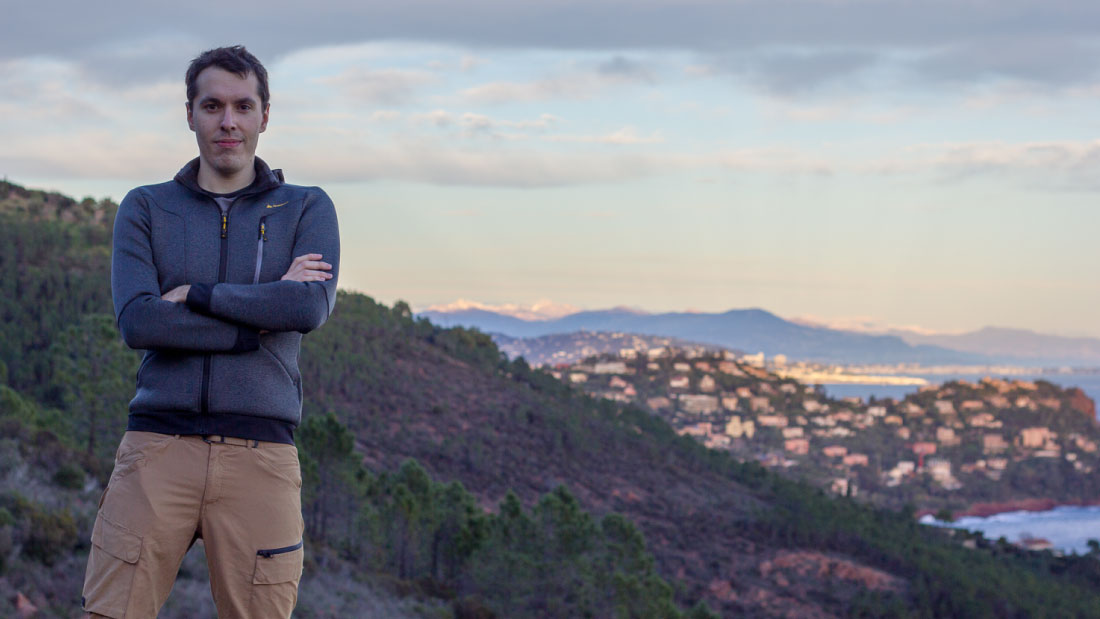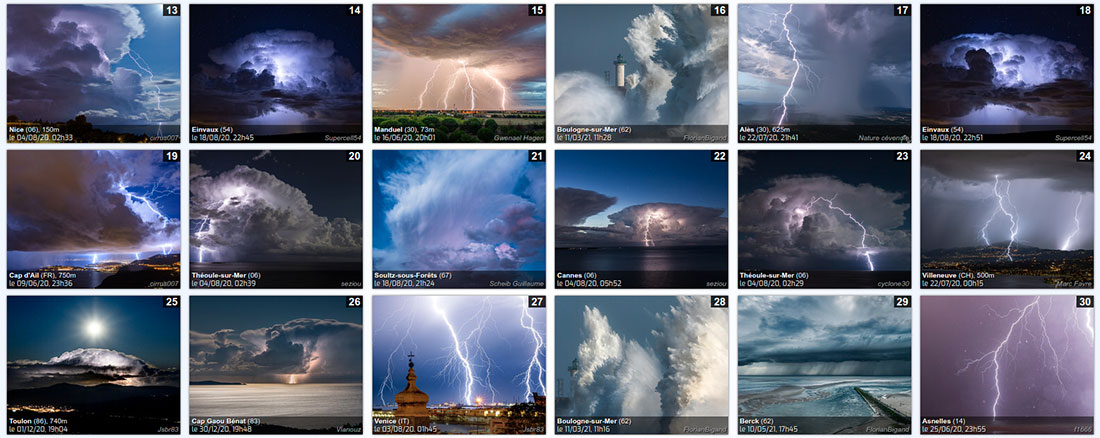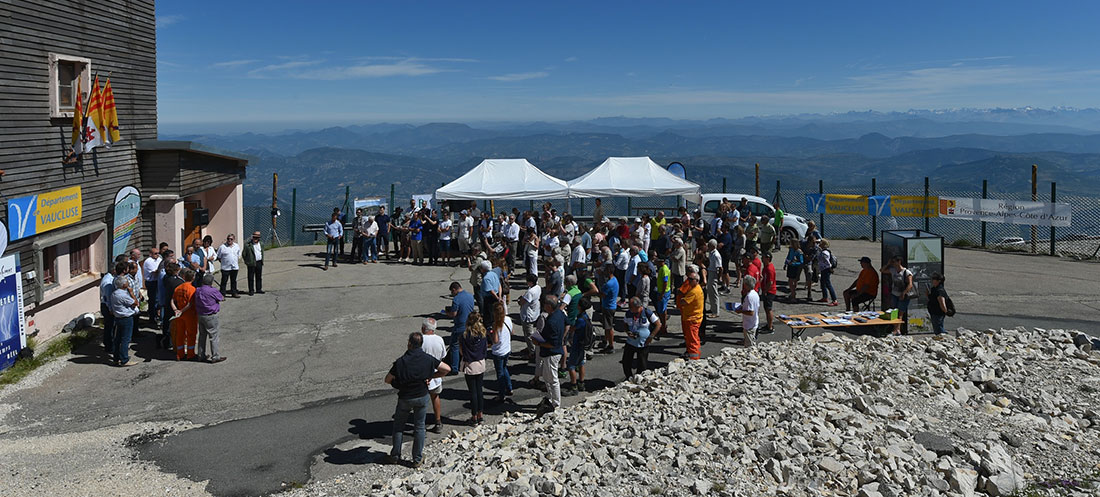
Infoclimat
Fred is technical manager at ELSYS Design in Vallauris. In his spare time, he is vice-president of Infoclimat, a key association in the field of weather in France and beyond. Let’s meet with an enthusiast.
Infoclimat
Can you tell us about Infoclimat?
This is an initiative that began in the late 1990s. It was the start of the Internet and a few groups of friends wanted to share their weather reports as well as their photos of climatic phenomena. We are talking here, for example, of enthusiasts who get up at 4 am to take pictures of thunderstorms, or to note rain readings.
They created a first very simple “OrageNet” website, then a second in 2001, with traffic increasing at the same time, which required funding. In 2003, the association loi 1901 Infoclimat was born with around forty members, with the initial objective of meeting the site’s IT needs.
What about today?
The association has changed a lot, in particular, because of the development of the Internet and the general public’s interest in climate change. We are 1,800 members and we position ourselves as a neutral provider of climatological information and analyzes that we share free of charge with the general public; this information is also taken up by professionals. To do this, we have installed a network of weather stations complementary to that of Météo France, representing 600 to 700 stations spread across France, some of which are 100% funded by the association.
Finally, we have an educational component, since in particular, we have taken up the “Weather at school” operation, which consists of running a network of meteorological stations for educational purposes (mathematics, physics, technologies), located in high schools throughout France.
From 40 to 1,800 members, what a growth! But did you manage to keep your original spirit?
Yes, absolutely. We remain extremely attached to our associative status. We only operate on the voluntary investment of a team of passionate people, we are self-financing and do not use advertising “trackers”. It is this passion that unites us, and that we find in each of our members, who do not have a typical profile: the youngest is 10 years old and the oldest 89, we are spread throughout France, and all socio-professional categories are represented. This diversity is our wealth.

Photo credits for the whole article: Baptiste Monterroso, Kévin Leclercq, Serge Zaka, Janis Brossard, Vianney Rudent, Florian Bigand et Yannick Lecenes / Infoclimat.
Fred’s role into the association
What is your role in the association?
I joined it in 2006, at that time a 12-year-old pre-teenager passionate about the study of science in general and climatic phenomena in particular. My parents told me that when I was little, I was already watching the snow fall and they had to ask me to close the door so that I did not catch a cold.
In 2009, after self-training, I started helping the person running the website. He left and I took his suite. Today we are talking about several billion pieces of data stored and tens of terabytes of precious weather records stored, accessed by 7 million unique visitors per year. In winter, our servers see 5,000 requests per second!
In 2013, I joined the board of directors and since 2015, I have been vice-president.
His involvement
Given the size of the association, I imagine it could be a full-time job. What does this imply in your daily life?
I spend 10 to 20 hours a week working for the association, but it could go up to 40 hours when I was a student, not to mention my vacation, nibbled by trips on behalf of the association, or simply full-time days coding to improve the website. This remains a constant organizational challenge for me.
In addition to managing the site, I have two main categories of work to do.
First of all, the animation of the team of around fifty volunteers (editors, moderators, people who check the quality of the data, etc.), who have always been “teleworking”, since they are spread all over France.
Then the establishment of partnerships. For example, we succeeded in installing a weather station at the top of Mont Ventoux in 2015. A Météo France station had existed since 1882, but it had been closed in 1968 for budgetary reasons. The site is located in a natural park, so we had to obtain administrative authorizations, but also to find the right contact at the time at France Telecom to negotiate the authorization to install our station at the top of their tower, whose data we share with Météo France. All this took more than 5 years, to write 4 pages of contract!

Inauguration of the Infoclimat weather station at the top of Mont Ventoux, France, on July 7, 2016.
Partnerships
Precisely, about Météo France, what relations do you have with them?
The weather business is a thriving one, so at first, they saw us grow and watched us with a certain suspicion, mistaking us for competitors. Along with our discussions, they were reassured as to our motivations and we became partners in 2010.
At the very beginning, they were particularly interested in the data from our participatory observatory, made up of weather readings equipment that meets the standards and criteria of the WMO (World Weather Organization).
With the rise of observation satellites, this partnership has since been reoriented towards the pooling of our weather stations, which have been installed and are maintained by our members. The interest is to improve the forecasting of small-scale phenomena (thunderstorms, freezing rain, snow, etc.), which requires the finest possible mesh of observations.
In return, Météo France also shares with us its own data, which is not usually available in open access, and contributes to the training of our members.
Do you have other partnerships?
Historically, weather data was exchanged over a global network created by WMO called the “GTS”. Official players from each country contributed, for example, Météo-Canada, etc. For years, we have been recovering this data and giving it unified access on our site, this avoids having to consult several national sites which sometimes offer much less data than Infoclimat (and are often not very user-friendly or full of advertisements).
In addition, like us in France, there are complementary networks of weather enthusiasts, also brought together in small associations, often regional (Nice-Météo06, ROMMA, etc.). We are discussing with them to try to unify all of this, always in a spirit of participation and sharing.
Is it easy?
In addition to the prior establishment of relationships of trust between the teams, it is especially necessary to agree on the technical terms (what equipment? What data transfers?).
It’s done with the Italians and the Belgians, it’s in progress with the Spaniards and the Portuguese. We are doing it gradually because I am the only developer for our website and it is currently only available in French.
As mentioned earlier, climate change has become a hot topic. How do you position yourself? Do you have an activist approach?
No, we focus on data collection and analysis. But of course, this information then serves to alert and we support the conclusions drawn by scientists. Our tools are used by professionals, including some experts from the IPCC, the Intergovernmental Panel on Climate Change, and we are very proud of it.
Call for volunteers
To conclude, do you have a particular message to say?
Yes, if an AViSTO PHP / MySQL / JS engineer was willing to come and help us with the website, we would be interested!
The ELSYS Design engineers are not left out either, since we are also working, for example, on LoRa technologies to interconnect our weather stations in areas without electricity and without a 4G network!
I hope this interview will have sparked a desire to join us …